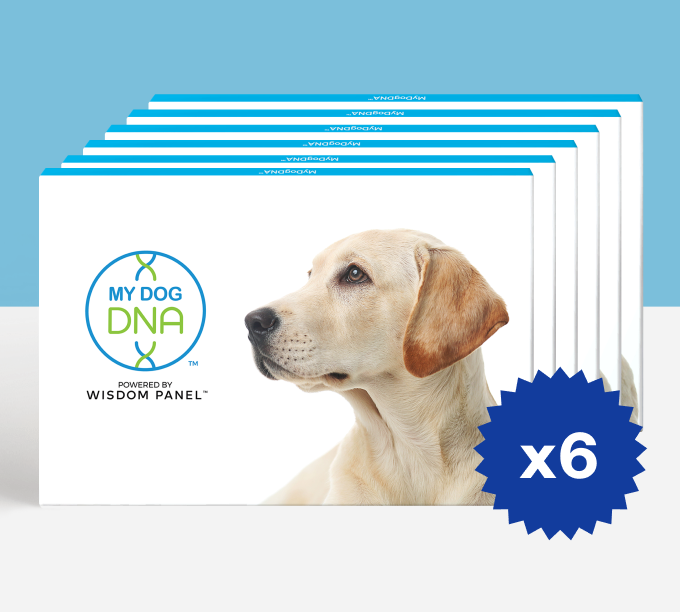Kidney dysplasia, or renal dysplasia (RD) is a developmental disorder that impacts the kidneys' ability to function properly. RD also goes by the names of CAKUT (congenital abnormalities of the kidneys and urinary tract), progressive juvenile nephropathy, juvenile renal disease, and familial renal disease, as the abnormality is evident from a young age. For breeders, this condition is particularly concerning because of its potential genetic component, its early onset in young dogs, and its significant impact on quality of life. Whilst genetic testing has emerged as a tool for identifying at-risk dogs, the topic remains complex, with conflicting research and ongoing community debate. Understanding the condition, how it’s diagnosed, and how to approach testing will help you navigate decision making with this challenging disorder.
What Is Kidney Dysplasia (RD)?
Kidney dysplasia occurs when the kidneys fail to develop normally in utero. Instead of maturing into well-organised, optimally functioning organs, the kidneys’ cell types are poorly differentiated, and the normal structures are disorganised, impairing their ability to filter blood and produce urine. Over time, this leads to chronic kidney disease (CKD), which worsens as the dog ages.
The condition can impact one or both kidneys, and signs often vary depending on severity of the dysplasia. Puppies with bilateral disease often die in the neonatal period, so their actual cause of death may go undetected. Early signs may appear in puppies, but some dogs show signs later in life. Watch for:
-
Increased thirst and urination
-
Poor growth or weight loss in puppies
-
Vomiting, lethargy, and loss of appetite

How Common Is Kidney Dysplasia?
The exact prevalence of kidney dysplasia is unknown, but it has been documented in several breeds, suggesting a genetic basis. Breeds most commonly associated with the condition include:
-
Shih Tzus
-
Lhasa Apsos
-
Soft-Coated Wheaten Terriers
-
Golden Retrievers
-
Standard Poodles
Although relatively rare, renal dysplasia can have devastating consequences for affected dogs and poses unique challenges for breeders striving to improve the health of their lines.
What causes kidney dysplasia?
As some breeds suffer from kidney dysplasia more often than others, it is assumed that there are genetic risk factors. However, RD is relatively rare and does not follow a simple genetic inheritance pattern, suggesting development of kidney dysplasia may be influenced by multiple genes or environment. It is not yet known if the risk genes differ across breeds. Additionally, infection in utero with canine herpesvirus has been known to cause RD.

How Is Kidney Dysplasia Diagnosed?
Diagnosing kidney dysplasia can be difficult because the clinical signs overlap with other kidney diseases. To confirm the diagnosis, veterinarians rely on:
-
Imaging: Ultrasounds may reveal smaller or abnormally structured kidneys.
-
Biopsy: A kidney biopsy is the gold standard for diagnosis, showing immature or abnormal tissue.
-
Bloodwork and Urinalysis: These tests help detect kidney dysfunction but do not definitively confirm dysplasia.
Early diagnosis is critical for managing the condition and improving quality of life.
The Cox-2 DNA Test
In 2011, research led by Whiteley et al. identified mutations in the Cox-2 gene promoter (PTGS2), which were proposed to be associated with renal dysplasia. This led to the development of a DNA test marketed for identifying at-risk dogs.
However, the findings sparked significant debate. Editors of PLOS ONE issued an “Expression of Concern” in 2012 due to concerns with the study’s design. A follow-up study in 2014 suggested that these mutations caused hypermethylation (a form of gene regulation) in dogs with confirmed renal dysplasia but noted that some biopsy-negative dogs also carried the mutations.
A separate study in 2015 by Safra et al. further questioned the test’s utility, finding that these mutations occur commonly in healthy dogs and wolves, and did not find a significant association between the variants and risk of disease, concluding the variation was benign.
Despite the controversy, the Cox-2 DNA test is still available. While the test offers insight into genetic variation, it does not diagnose kidney dysplasia and additional study did not support the diagnostic utility of the PTGS2 test. As appealing as a genetic test to breed away from this disease would be, gold-standard diagnosis still requires clinical evaluation, imaging and biopsy.
Staging and Managing Kidney Dysplasia
Once diagnosed, the severity of kidney dysplasia determines its management. While the condition cannot be cured, supportive care can slow progression and improve quality of life:
-
Mild Cases: Dogs may remain stable with dietary changes and monitoring.
-
Moderate to Severe Cases: Lifelong management includes:
-
-
Low-protein, kidney-friendly diets to reduce strain on the kidneys.
-
-
-
Increased hydration to support kidney function.
-
-
-
Medications to manage signs like nausea, high blood pressure, or electrolyte imbalances.
-
Regular veterinary check-ups are essential to monitor kidney function and adjust care as needed.
What Breeders Can Do
For breeders, renal dysplasia highlights the importance of a balanced approach to health screening and breeding strategies:
-
Focus on clinical diagnostics for diagnosis: Surgical or ultrasound-guided biopsy remains the gold standard for confirming renal dysplasia. A positive PTGS2 DNA result is of unknown significance.
-
Protect genetic diversity: Avoid excluding valuable breeding dogs too quickly. RD-affected dogs should not be bred, but other dogs in the pedigree may still be of merit in breeding programmes and may have valuable genetic diversity to contribute.
-
Keep records and track incidence: The Swedish Kennel Club posts post-mortem data of dogs and puppies including if RD was present, and much of that information can be found in their SKK Avelsdata. Consider having your veterinarian perform a necropsy for unexplained neonatal puppy losses to ensure you’re not missing more RD cases than you realise. Careful record-keeping may also reveal a pattern.
-
Educate puppy buyers: Be transparent about breed-specific risks, teach owners to recognise early signs of kidney disease, and emphasize the importance of regular veterinary care.
Navigating Kidney Dysplasia with Knowledge and Care
Kidney dysplasia is a complex condition that breeders must approach thoughtfully. The lack of diagnostic genetic tests for RD highlights the importance of combining careful record keeping with clinical diagnostics to make well-informed breeding decisions.
By prioritising transparency, supporting ongoing research, and managing affected dogs with care, breeders can work to reduce the impact of renal dysplasia whilst protecting the health and diversity of their breed
References:
Nicholas, F. W., Tammen, I., & Sydney Informatics Hub. (2024). OMIA:001135-9615: Online Mendelian Inheritance in Animals (OMIA) [dataset]. https://omia.org/. https://doi.org/10.25910/2AMR-PV70
PLOS ONE Editors. Expression of concern: Novel allelic variants in the canine cyclooxgenase-2 (Cox-2) promoter are associated with renal dysplasia in dogs. PLoS One. 2012;7(11):e49703. doi: 10.1371/journal.pone.0049703. Epub 2012 Nov 8. PMID: 23145184; PMCID: PMC3493546.
Safra N, Hayward LJ, Aguilar M, Sacks BN, Westropp JL, Mohr FC, Mellersh CS, Bannasch DL. DNA Sequence Variants in the Five Prime Untranslated Region of the Cyclooxygenase-2 Gene Are Commonly Found in Healthy Dogs and Gray Wolves. PLoS One. 2015 Aug 5;10(8):e0133127. doi: 10.1371/journal.pone.0133127. Erratum in: PLoS One. 2018 Apr 10;13(4):e0195924. doi: 10.1371/journal.pone.0195924. PMID: 26244515; PMCID: PMC4526539.
Whiteley MH, Bell JS, Rothman DA. Novel allelic variants in the canine cyclooxgenase-2 (Cox-2) promoter are associated with renal dysplasia in dogs. PLoS One. 2011 Feb 8;6(2):e16684. doi: 10.1371/journal.pone.0016684. PMID: 21346820; PMCID: PMC3035645.
Whiteley MH. Allelic variation in the canine Cox-2 promoter causes hypermethylation of the canine Cox-2 promoter in clinical cases of renal dysplasia. Clin Epigenetics. 2014 Apr 3;6(1):7. doi: 10.1186/1868-7083-6-7. PMID: 24708682; PMCID: PMC4234983.








